|
Sam Burnham, Curator
@C_SamBurnham So Atlanta has been named a finalist. It's not exactly a surprise. The state government as well as the City of Atlanta are just giddy with excitement. It is as if this is a good thing. There is no way to show them that this is quite possibly a disaster in the making. Nathan Deal is basically willing to give Amazon, one of the richest companies in the world, $1.5 billion to move to Georgia. It is mind boggling. In return Amazon would theoretically move to Georgia and hire 50,000 Georgians to high paying jobs. Reality is that they'd relocate the vast majority of those workers. Many would come from states with dramatically different cultural and political belief systems. The governor is willing to burn 1.5 billion of our tax dollars to possibly import 50,000 liberal voters. What will that mean for Georgia's small towns? We already have a terrible problem with Metro Atlanta not understanding what is going on in rural Georgia. This move is going to lead to more inflated housing costs, more interbasin water transfers, more traffic, more demands that state money be spent on Atlanta's transit fiasco, more urban and suburban sprawl into Georgia's farmlands and forests, more energy usage on Georgia grids, more pollution, more crime. It is a terrible idea. When pondering the money that this deal could bring into the state, several noted economists have made statements that getting Amazon could ever recuperate the amount of money that we're willing to spend to get it. The loss in tax revenue, increased expenses for services and infrastructure, as well as the price of new demands made by the company would never allow the economic benefits of the deal to catch up to the expenses. There is no way to ever get that $1.5 billion back. It will be gone forever. Just a fraction, perhaps half, of the credits and incentives could be used to improve broadband coverage in rural Georgia. The impact this could have on education, medicine, and homespun business in the areas outside the metro is enormous. Spreading the ecnomic benefits o0ver a larger swath of the state would bring our economy closer to more Georgians than throwing twice as much money into a hole in The Gulch in Atlanta ever could. We need to be contacting our representatives in Atlanta and putting the brakes on this. Once the money is gone, it's gone forever. If we get a mess to compound the loss of money we'll lose twice. The Amazon is not a river we want to ride.
0 Comments
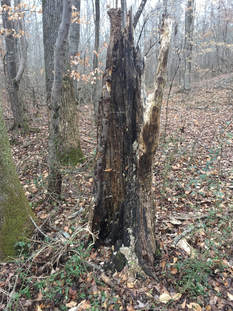 Sam Burnham, Curator @C_SamBurnham It was a breezy cold day in west Georgia. Despite the weather, I needed a breath of fresh air. I needed to hear the singing of the birds and the rustle of fallen leaves beneath my feet. So I took a walk in the woods. The sting of that winter wind on my face wasn't comfortable. It was unseasonably cold and that harsh dryness moved across my cheeks and made my ears burn. My exhalation formed a fog that flowed outward nearly a foot before disappearing as all mist eventually does. While I do despise the cold there is still something about it that is compelling. It is as much a part of the cycle of life as the warmth of spring. Any true Georgian can tell you that our peaches and apples need these frosty days to attain the flavors and qualities that have made them famous. And just as new shoots from a decaying stump, those warm spring days will follow this harsh season. Besides, one cannot truly appreciate that warm March sun on his face if he has not felt that bite of January's wind as well. 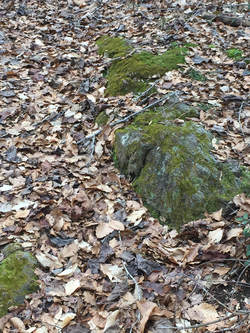 Even in this cold and decaying landscape life is not absent. Moss grows on a rock, a frail and inconsequential life eats away at something so permanent and substantial.The very creation of a healthy and fertile forest floor depends, in part, on the ability of moss to overcome granite. With tenacity and time anything is possible. From such an impossible task comes soil, then herbs and ferns which lead to shrubs and then understory before a canopy rises to give us the forest. While it can be a fragile balance, it is also known across the world. One place that science and religion totally agree - the forest was here before us. In that fragility, like the moss on the rock, is a tenacity. A fallen tree sends shoots skyward, seeking life-giving light. 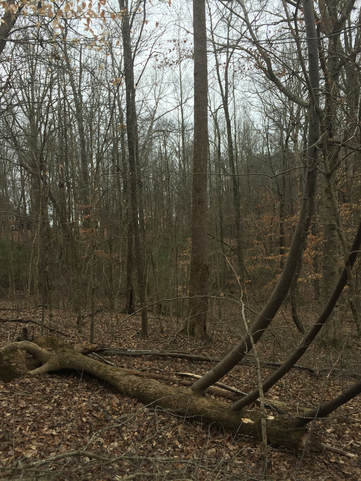 As the forest finds ways to survive, it presents us with wonders. These are only dependent on our willingness to stop, to look, see, and recognize what is before us. It takes an effort to brave the cold, to get outside, to wander from the comforts of "civilization." We also have to be comfortable in that surrounding. We have to take the forest or the field and not see it as a a place with potential, wondering about the ways we can improve it or change it. We have to look at it as complete, as already serving its best purpose just by being. By becoming comfortable in such an environment we are returning to a healthy state of nature. We are no longer an intruder. We have instead become a part of nature. I believe it was Wendell Berry who warned against the tendency to photograph a landscape without any sign of man. We mustn't see ourselves as intruders in nature. We mustn't approach the world as it we are the defilers of nature. While that is often the case, we need to shift our thinking. It is not productive to see the presence of people as something that makes the environment any less pristine. There is a history that would support that man tends to develop, pollute, and defile the natural world. But there is also a history of man preserving, protecting, and living in harmony with that same world. My takeaway from my immersion in that stand of trees is simple. Our goal should never be creating natural landscapes or environments that are free from any influence or presence of man. Our goal must always be to avoid ever having a world where man is never devoid of the presence and influence of natural landscapes and environments. Sam Burnham, Curator @C_SamBurnham Friday was a bit of a travel day. An appearance on GPB Radio and then a ride back home followed by a trip to Carroll County that afternoon meant eight counties in a day. That's not a big deal in our interstate age. I-75 goes through 19 counties from here to the Florida Line. So eight counties in a day...no big deal. But it wasn't always that way. 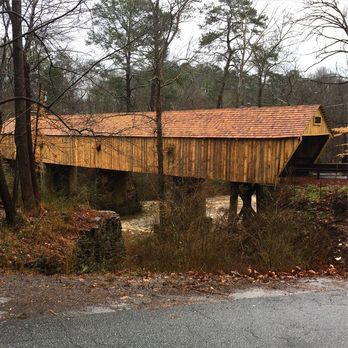 Concord Covered Bridge Spanning Nickajack Creek Concord Covered Bridge Spanning Nickajack Creek When I left the GPB studio I decided to follow up on a tip about a priceless piece of Georgia history. What is possibly one of the best-kept secrets in all of Georgian preservation, there is a covered bridge (ca. 1872 to replace the ca. 1840's bridge destroyed during the Civil War) that is still in everyday use! It's not some long ago detoured relic you can walk across. If you meet the seven foot clearance requirements you can drive across! I had to take the farthest left of the four turn lanes off the 285 exit so I'd be in place to make the left hand turn onto Spring Rd, right next to the Lexus dealership. Then I wound through shopping malls, Indian restaurants, and subdivisions filled with stately homes. Until I found myself in a tree-filled hollow and a real covered bridge that carried me across a rain-swollen Nickajack Creek. All this in Smyrna. In the shadow of the proverbial Ring of Fire - Interstate 285. The very next day, I'm in Carroll County listening to my mother-in-law telling stories about visiting her great-grandparents in the Smyrna of that day. Her family took dirt roads to a little cracker cabin where her great-grandmother awoke early to prepare streak-o-lean biscuits for the sharecroppers who hit the fields early, trying to pay the rent. That's a long way from Indian restaurants and Lexus dealers. 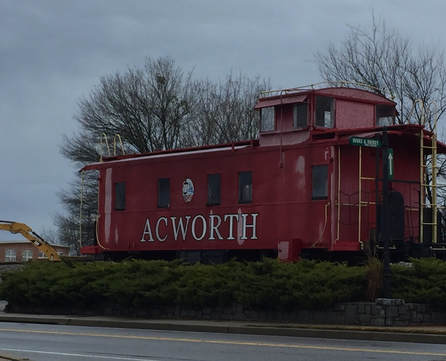 The Railroad Centerpiece of Acworth The Railroad Centerpiece of Acworth The next segment off the big road was to get off the interstate and follow the old road - Old 41 - from Wild Man's up to the new ball fields in Emerson. The speed limit is lower but so is the traffic and the scenery is exponentially better. Between the two locations I encountered the trauma of crossing the interstate not once, but twice, on the left side of the road. This isn't due to a construction detour or an accident, this is Georgia DOT's answer for long turn lane waits for left-hand exits. Just crisscross the traffic on overpasses. Dear Lord, just get me to the two lane. Old 41, as the name suggests, is old. It is largely residential, homes and small businesses, schools and churches, trees and shrubs. In some places the road spreads into turn lanes, even four lanes in a few places but the highlight this time was Acworth. 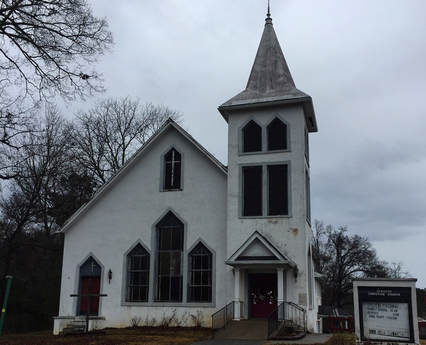 The Simple Beauty of Acworth Christian Church The Simple Beauty of Acworth Christian Church This wasn't my first time in Acworth, not by a mile. But this time was intentional. Although not a full fledged stop with details on stores and restaurants, I did want to get some photos and enjoy the architecture. Acworth is a lovely town. The downtown area is tastefully preserved and vibrant. This is not the woeful southern small town that is in disrepair and vacated. There are businesses - shops, restaurants and such - lining both sides of the road. Like so many similar towns, the railroad tracks cut right through the middle of town so you have to check both sides of the tracks to see it all. There are plenty of well-kept homes just behind the rows of businesses. A new apartment complex has broken ground just east of downtown promises to stick with the prevailing architecture and fit in rather than stick out. Seeing Acworth yourself requires a short drive off Exits 277 or 278 and just following signs for a mile or less. Or just take the Road Less Traveled...in this case Old 41 and see what else you can find on your own. |
Sam B.Historian, self-proclaimed gentleman, agrarian-at-heart, & curator extraordinaire Social MediaCategories
All
Archives
November 2022
|
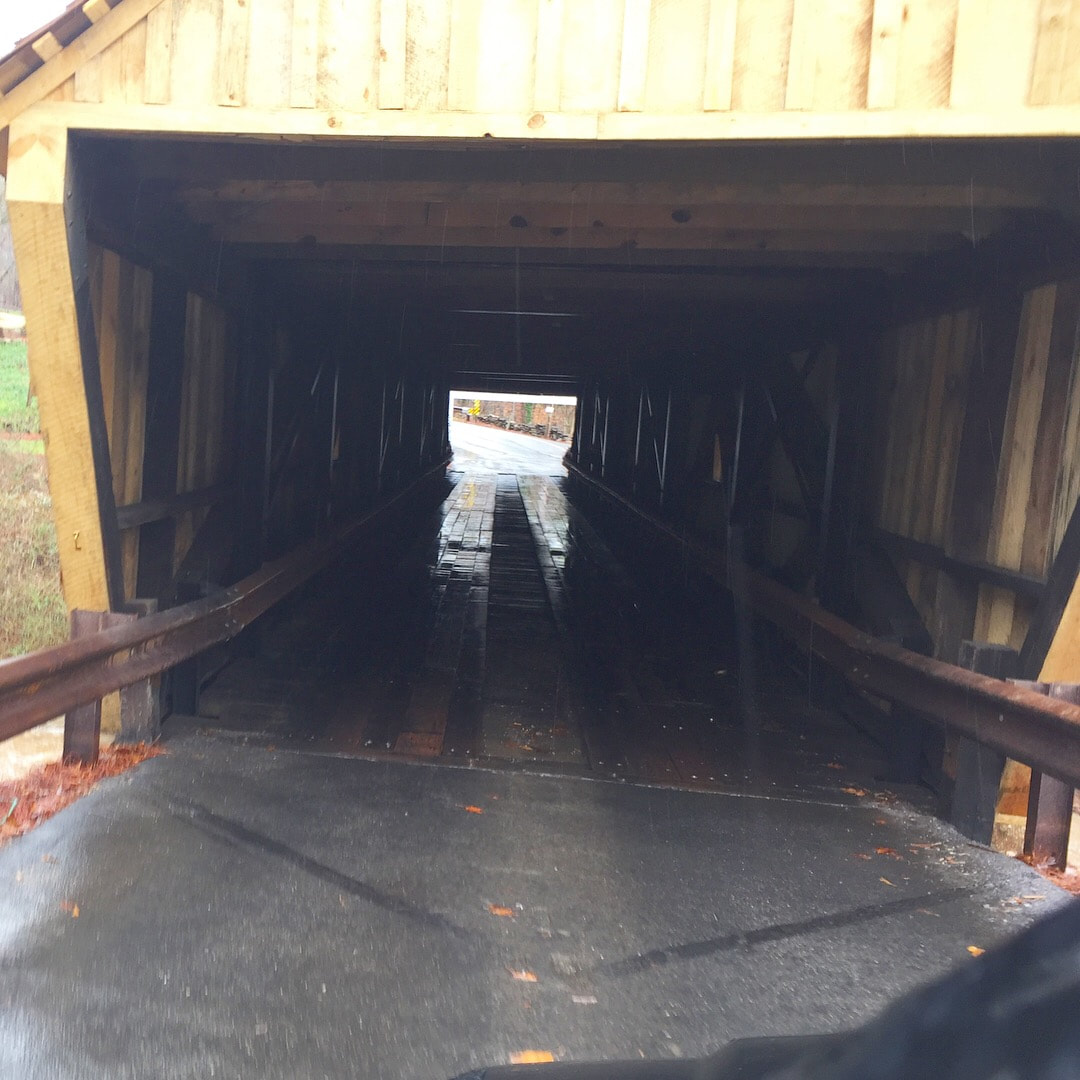
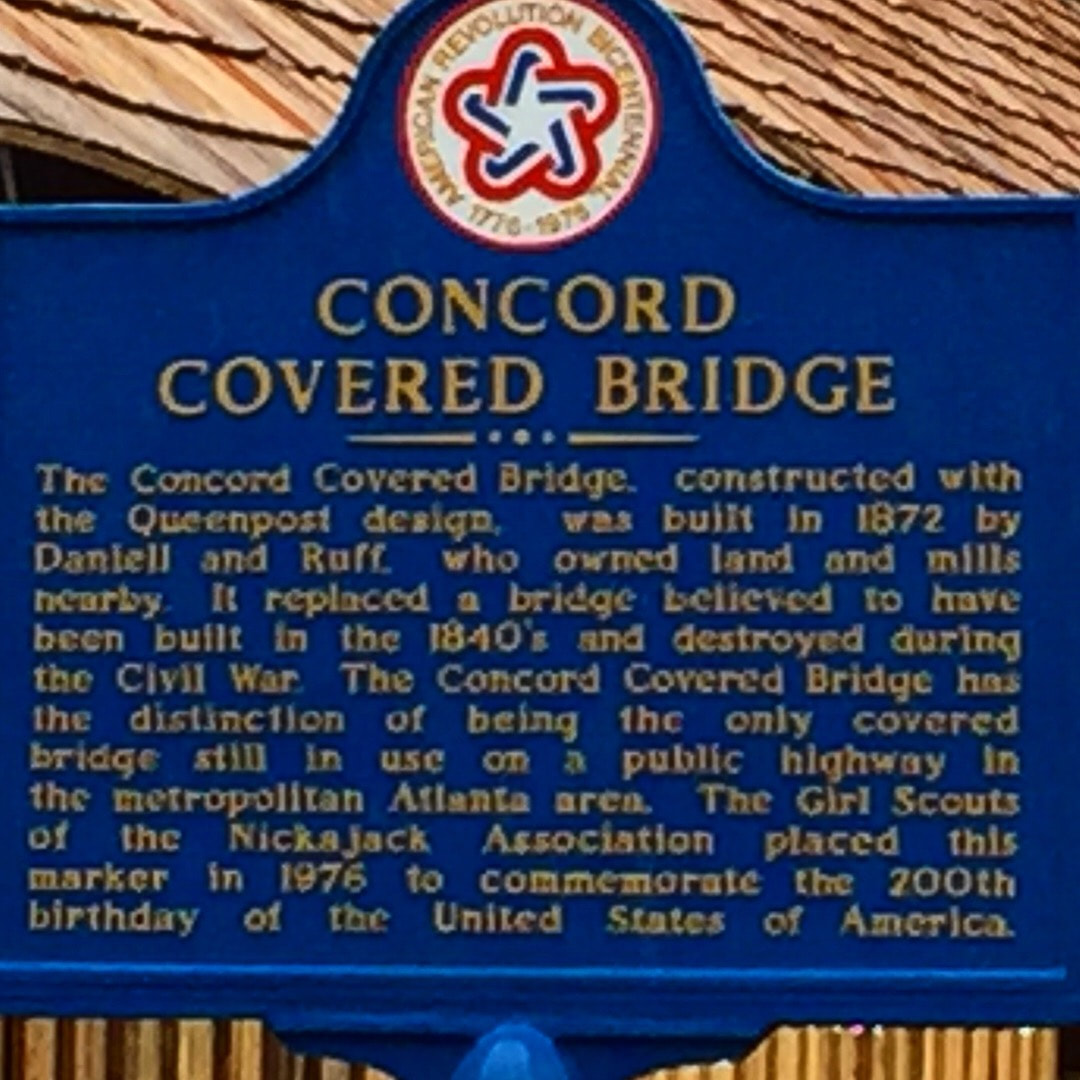
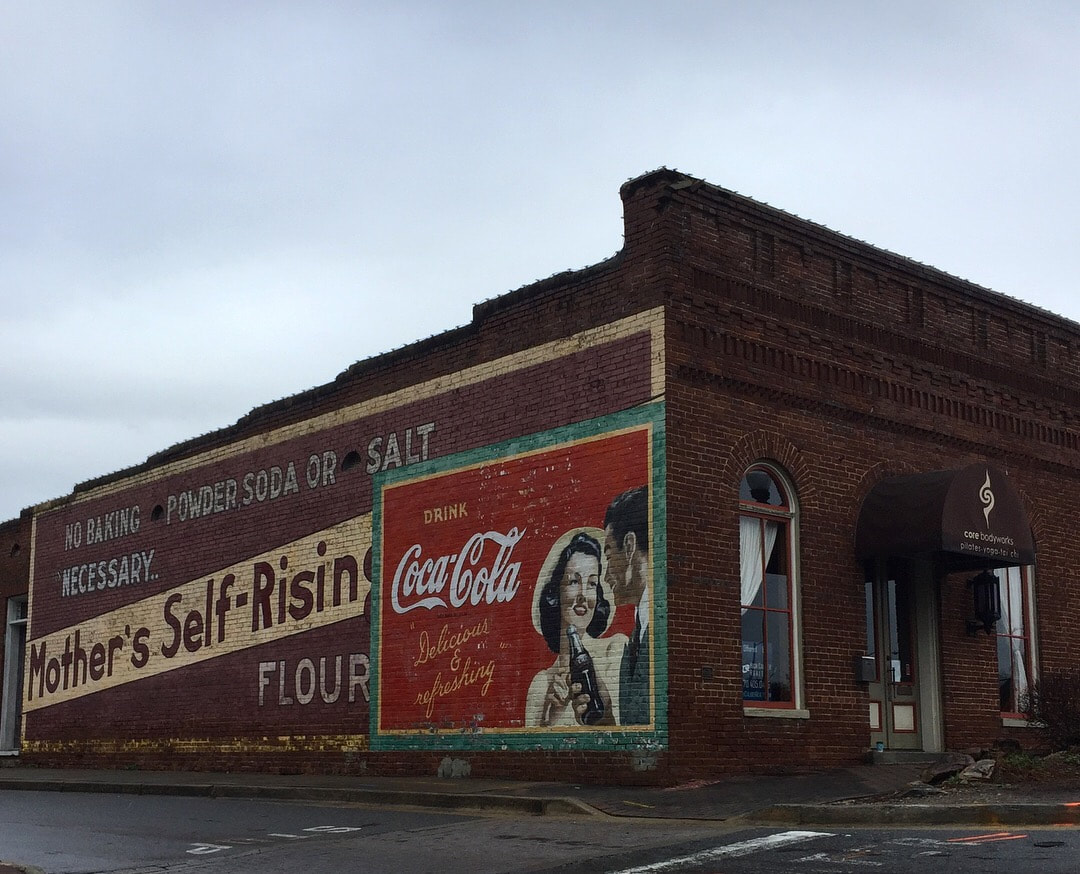
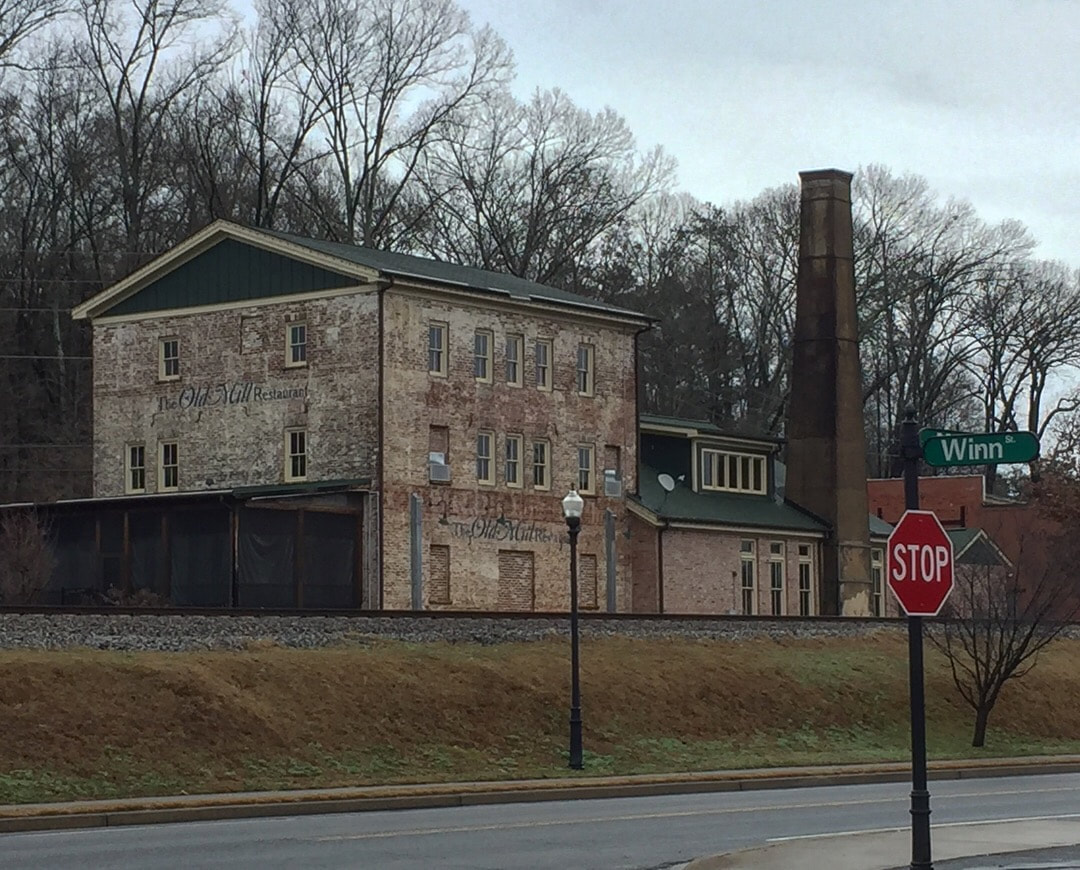


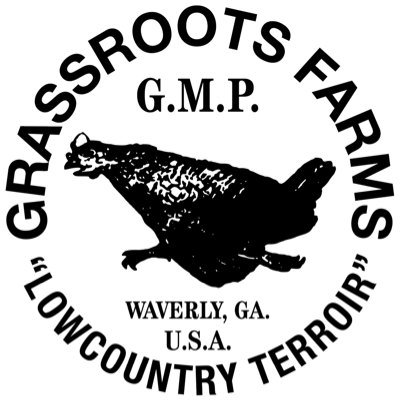

 RSS Feed
RSS Feed
